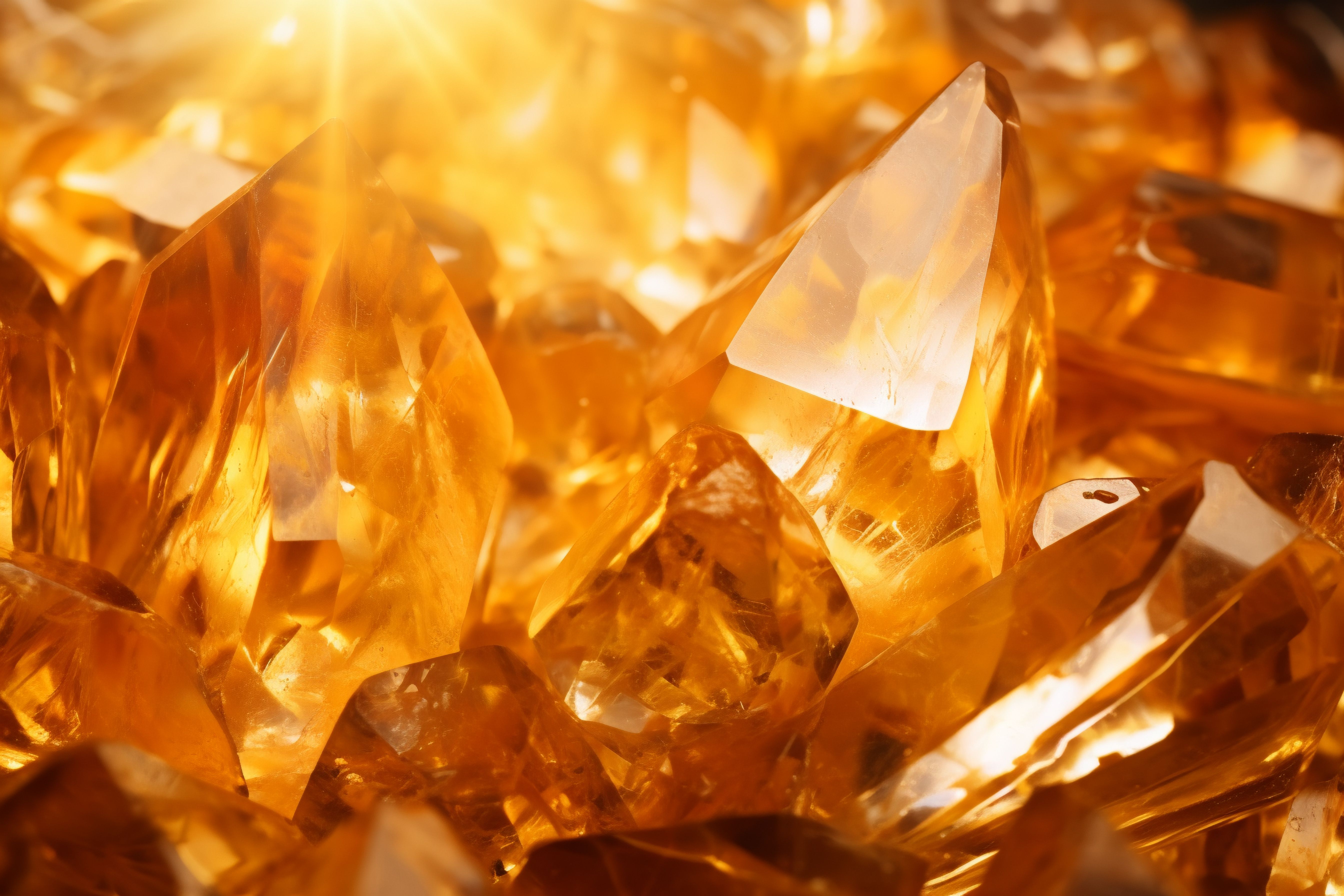Spectroscopic Techniques Evaluate TEAP Single Crystals for Usefulness in Nonlinear Optical Applications
Triethylaminium picrate (TEAP) crystals were developed using a slow evaporation solution growth method and then characterized for their feasibility in optoelectronic and other uses.
Researchers in India have used a variety of spectroscopic techniques to paint a complete picture of the potential of triethylaminium picrate (TEAP) crystals for use in nonlinear optical applications including optoelectronics, or when magnetic, optoelectronic, and electronic devices are monolithically integrated (1). The work of these five authors, who are affiliated with Malla Reddy Engineering College for Women, Meenakshi Ammal Polytechnic College, and Adhiparasakthi Engineering College, and the Defence Research and Development Organization of the Ministry of Defence in India, was recently published in the journal Spectrochimica Acta Part A: Molecular and Biomolecular Spectroscopy.
shiny citrine yellow crystal close up pattern texture | Image Credit: © Anna Schlosser - stock.adobe.com

In the realm of optoelectronics, TEAP crystals are employed for their ability to generate and manipulate optical signals. They are utilized in devices like frequency doublers, optical parametric oscillators, and other nonlinear optical devices. The nonlinear properties of TEAP crystals enable them to efficiently convert light of one frequency to another, enabling the creation of new frequencies and enhancing the capabilities of optoelectronic systems.
In their organic form, molecular crystals offer a certain flexibility that enhances nonlinear optical (NLO) properties, which originate from interactions between electrons in the molecule and electric fields in light, or electromagnetic radiation (1). The research team said that picric acid (2,4,6-trinitrophenol, TNP), an analog of trinitrotoluene (TNT) where the methyl group is supplanted by a hydroxyl substitute, forms salts and charge-transfer (CT) complexes with certain organic components. According to this study, comprehending CT complexes of identical molecules that have distinct electron receptors can offer clues to the biological effects of the particular drug being analyzed.
With those end goals in mind, the team devised a method of growing TEAP single crystals using a slow evaporation technique—in terms of time until what they termed “good-sized” crystals (19 × 8 × 5 mm3) were formed, within 45 days (1). The experiment used an ambient temperature of 35 °C, with the salt from the picric acid being synthesized and triethylamine and methanol used as solvents, the solution being mixed at a 1:1 ratio.
Multiple spectroscopic and related techniques were deployed to characterize the composition of the grown crystals: single-crystal X-ray diffraction (SXRD), which determined the structure of the compound; powder X-ray diffraction (PXRD), in which the Bragg peak confirmed crystallinity; carbon/hydrogen/nitrogen (CHN) elemental analysis that confirmed the composition and stoichiometry of the synthesized salts; Fourier transform infrared (FT-IR) and FT-Raman spectroscopies, which confirmed the presence of differing functional groups; ultraviolet/visible near-infrared (UV-vis–NIR) spectroscopy, identifying the optical transmission window and lower cut-off wavelength; microhardness for mechanical stability; dielectric studies for frequency; thermogravimetric differential thermal analysis (TG/DTA), and differential scanning calorimetry (DSC), investigating thermal behavior; and finally, an evaluation of NLO properties (1). Results of each analysis were charted by the authors.
What those results revealed, in summary, included the FT-IR and FT-Raman spectra indicating a protonation of the amine in the crystalline material indicated both by the presence of N+H vibration and the disappearance of OH vibrations (1). The crystal was thermally stable up to 170 °C and melted at 177.45 °C. Its second harmonic generation (SHG) efficiency was measured 1.5 times greater than potassium dihydrogen phosphate (KDP). These and other measurements, the researchers said, demonstrated the TEAP single crystal’s suitability for optoelectronic or other NLO applications.
Reference
(1) Elangovan, K.; Ingle, K. E.; Dhanasekaran, R.; Mahadevan, M.; Dhilip, M. Synthesis, Growth, Optical, Mechanical, Thermal, Dielectric, and SHG Properties of Triethylaminium Picrate (TEAP) Single Crystal for Nonlinear Optical Applications. Spectrochim. Acta, Part A 2024, 308, 123680. DOI: 10.1016/j.saa.2023.123680
New Study Reveals Insights into Phenol’s Behavior in Ice
April 16th 2025A new study published in Spectrochimica Acta Part A by Dominik Heger and colleagues at Masaryk University reveals that phenol's photophysical properties change significantly when frozen, potentially enabling its breakdown by sunlight in icy environments.
AI-Driven Raman Spectroscopy Paves the Way for Precision Cancer Immunotherapy
April 15th 2025Researchers are using AI-enabled Raman spectroscopy to enhance the development, administration, and response prediction of cancer immunotherapies. This innovative, label-free method provides detailed insights into tumor-immune microenvironments, aiming to optimize personalized immunotherapy and other treatment strategies and improve patient outcomes.
Karl Norris: A Pioneer in Optical Measurements and Near-Infrared Spectroscopy, Part I
April 15th 2025In this "Icons of Spectroscopy" column, executive editor Jerome Workman Jr. details how Karl H. Norris has impacted the analysis of food, agricultural products, and pharmaceuticals over six decades. His pioneering work in optical analysis methods including his development and refinement of near-infrared (NIR) spectroscopy has transformed analysis technology. This Part I article of a two-part series introduces Norris’ contributions to NIR.